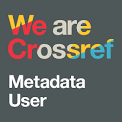Learning Innovations in Physical Education, Sports, and Health During the Covid-19 Pandemic
DOI:
https://doi.org/10.51574/ijrer.v1i2.280Keywords:
Covid-19 Pandemic, Learning Innovation, PJOKAbstract
The COVID-19 pandemic has altered our lives forever. The realm of education is one of them. The learning process is disrupted, yet as a result of this, new educational innovations have evolved, which indirectly drive education down a more advanced path by incorporating technology. As a result, during the COVID-19 pandemic, this study takes a qualitative method with good learning analytic tools and learning innovations. Furthermore, data for this study was gathered through tracking numerous learning sources, with an emphasis on online learning that makes use of technology, particularly the internet network. Students have the most trouble with online learning in physical education, sports, and health since they emphasize movement activities, but online learning has more students just sitting in front of the electronic devices used. Furthermore, learning on the network is frequently hampered by a sluggish internet connection, which might obstruct the learning process. When learning takes place in person, various hurdles arise. The most significant of these is the time limit for face-to-face sessions at school, which forces educators to condense the material to be delivered. In practice, students must create video recordings in order to obtain the psychomotor value of students in the worksheet because the primary goal of this subject for elementary school students is to promote children's movement activities.
References
Afrianto, A. (2018). Being a professional teacher in the era of industrial revolution 4.0: opportunities, challenges and strategies for innovative classroom practices. English Language Teaching and Research, 2(1). http://ejournal.unp.ac.id/index.php/eltar/article/view/102675
Aisyah, R. N., Istiqomah, D. M., & Muchlisin, M. (2021). Rising English Students’ Motivation in Online Learning Platform: Telegram Apps Support. Utamax: Journal of Ultimate Research and Trends in Education, 3(2), 90-96. https://doi.org/10.31849/utamax.v3i2.6464
Ally, M. (2004). Foundations of educational theory for online learning. Theory and practice of online learning, 2, 15-44.
Amhag, L., Hellström, L., & Stigmar, M. (2019). Teacher educators' use of digital tools and needs for digital competence in higher education. Journal of Digital Learning in Teacher Education, 35(4), 203-220. https://doi.org/10.1080/21532974.2019.1646169
Anderson, T. (2004). Towards a theory of online learning. Theory and practice of online learning, 2, 109-119.
Ansori, M. (2018). Desain dan Evaluasi Pembelajaran Blended Learning Berbasis Whatsapp Group (WAG). Dirasah: Jurnal Studi Ilmu dan Manajemen Pendidikan Islam, 1(1), 120-134. https://doi.org/10.29062/dirasah.v1i1.56
Beijaard, D. (2019). Teacher learning as identity learning: models, practices, and topics. Teachers and Teaching, 25(1), 1-6. https://doi.org/10.1080/13540602.2019.1542871
Bernacki, M. L., Greene, J. A., & Crompton, H. (2020). Mobile technology, learning, and achievement: Advances in understanding and measuring the role of mobile technology in education. Contemporary Educational Psychology, 60, 101827. https://doi.org/10.1016/j.cedpsych.2019.101827
Chang, T. Y., Hong, G., Paganelli, C., Phantumvanit, P., Chang, W. J., Shieh, Y. S., & Hsu, M. L. (2021). Innovation of dental education during COVID-19 pandemic. Journal of Dental Sciences, 16(1), 15-20. https://doi.org/10.1016/j.jds.2020.07.011
Chick, R. C., Clifton, G. T., Peace, K. M., Propper, B. W., Hale, D. F., Alseidi, A. A., & Vreeland, T. J. (2020). Using technology to maintain the education of residents during the COVID-19 pandemic. Journal of surgical education, 77(4), 729-732. https://doi.org/10.1016/j.jsurg.2020.03.018
Chiu, T. K., Lin, T. J., & Lonka, K. (2021). Motivating online learning: The challenges of COVID-19 and beyond. The asia-pacific education researcher, 30(3), 187-190. https://doi.org/10.1007/s40299-021-00566-w
Daniel, S. J. (2020). Education and the COVID-19 pandemic. Prospects, 49(1), 91-96. https://doi.org/10.1007/s11125-020-09464-3
Ersin, P., & Atay, D. (2021). Exploring online mentoring with preservice teachers in a pandemic and the need to deliver quality education. International Journal of Mentoring and Coaching in Education. https://doi.org/10.1108/IJMCE-11-2020-0077
Fauzi, I., & Khusuma, I. H. S. (2020). Teachers’ elementary school in online learning of COVID-19 pandemic conditions. Jurnal Iqra': Kajian Ilmu Pendidikan, 5(1), 58-70. https://doi.org/10.25217/ji.v5i1.914
Ferri, F., Grifoni, P., & Guzzo, T. (2020). Online learning and emergency remote teaching: Opportunities and challenges in emergency situations. Societies, 10(4), 86. https://doi.org/10.3390/soc10040086
Gunawan, G., Kristiawan, M., Risdianto, E., & Monicha, R. E. (2021). Application of the zoom meeting application in online learning during the pandemic. Education Quarterly Reviews, 4(2). https://papers.ssrn.com/sol3/papers.cfm?abstract_id=3819839
Hantrais, L., Allin, P., Kritikos, M., Sogomonjan, M., Anand, P. B., Livingstone, S., ... & Innes, M. (2021). Covid-19 and the digital revolution. Contemporary Social Science, 16(2), 256-270. https://doi.org/10.1080/21582041.2020.1833234
Harasim, L. (2006). A history of e-learning: Shift happened. In The international handbook of virtual learning environments (pp. 59-94). Springer, Dordrecht. https://doi.org/10.1007/978-1-4020-3803-7_2
Harijanto, B., Apriyani, M. E., & Hamdana, E. N. (2021). Online Learning System for Kampus Merdeka: Innovative Learning In Covid-19 Pandemic. IJORER: International Journal of Recent Educational Research, 2(5), 590-599. https://doi.org/10.46245/ijorer.v2i5.156
Haris, I. N. (2018). Model pembelajaran peer teaching dalam pembelajaran pendidikan jasmani. Biormatika: Jurnal ilmiah fakultas keguruan dan ilmu pendidikan, 4(01). http://www.ejournal.unsub.ac.id/index.php/FKIP/article/view/191
Hasanah, N. R., Adi, I. P. P., & Suwiwa, I. G. (2021). Survey Pelaksaan Pembelajaran Pjok Secara Daring Pada Masa Pandemi Covid-19. Jurnal Kejaora (Kesehatan Jasmani Dan Olah Raga), 6(1), 189-196. https://doi.org/10.36526/kejaora.v6i1.1295
Hrastinski, S. (2019). What do we mean by blended learning?. TechTrends, 63(5), 564-569. https://doi.org/10.1007/s11528-019-00375-5
Ilmanto, A. H., Fahyuni, E. F., & Harahap, A. (2021). The Problems of Online Learning: The Role of Parents During The Covid-19 Pandemic. Nazhruna: Jurnal Pendidikan Islam, 4(2), 284-293. https://doi.org/10.31538/nzh.v4i2.1471
Irawan, A. W., Dwisona, D., & Lestari, M. (2020). Psychological impacts of students on online learning during the pandemic COVID-19. KONSELI: Jurnal Bimbingan dan Konseling (E-Journal), 7(1), 53-60. https://doi.org/10.24042/kons.v7i1.6389
Jeganathan, S., & Fleming, P. S. (2020). Blended learning as an adjunct to tutor-led seminars in undergraduate orthodontics: a randomised controlled trial. British Dental Journal, 228(5), 371-375. https://doi.org/10.1038/s41415-020-1332-1
Karma, I., Darma, I. K., & Santiana, I. (2021). Blended Learning is an Educational Innovation and Solution During the COVID-19 Pandemic. International research journal of engineering, IT & scientific research. http://dx.doi.org/10.2139/ssrn.3774907
Kim, J. (2020). Learning and teaching online during Covid-19: Experiences of student teachers in an early childhood education practicum. International Journal of Early Childhood, 52(2), 145-158. https://doi.org/10.1007/s13158-020-00272-6
Kivunja, C. (2018). Distinguishing between theory, theoretical framework, and conceptual framework: A systematic review of lessons from the field. International Journal of Higher Education, 7(6), 44-53. https://doi.org/10.5430/ijhe.v7n6p44
Kumar, V., & Sharma, D. (2021). E-Learning Theories, Components, and Cloud Computing-Based Learning Platforms. International Journal of Web-Based Learning and Teaching Technologies (IJWLTT), 16(3), 1-16. https://doi.org/10.4018/IJWLTT.20210501.oa1
Liu, Z. Y., Lomovtseva, N., & Korobeynikova, E. (2020). Online learning platforms: Reconstructing modern higher education. International Journal of Emerging Technologies in Learning (iJET), 15(13), 4-21. https://doi.org/10.3991/ijet.v15i13.14645
Martin, F., Chen, Y., Moore, R. L., & Westine, C. D. (2020). Systematic review of adaptive learning research designs, context, strategies, and technologies from 2009 to 2018. Educational Technology Research and Development, 68(4), 1903-1929. https://doi.org/10.1007/s11423-020-09793-2
Martínez, S., Guíñez, F., Zamora, R., Bustos, S., & Rodríguez, B. (2020). On the instructional model of a blended learning program for developing mathematical knowledge for teaching. ZDM, 52(5), 877-891. https://doi.org/10.1007/s11858-020-01152-y
Moore, J. L., Dickson-Deane, C., & Galyen, K. (2011). e-Learning, online learning, and distance learning environments: Are they the same?. The Internet and higher education, 14(2), 129-135. https://doi.org/10.1016/j.iheduc.2010.10.001
Mortera-Gutiérrez, F. (2006). Faculty best practices using blended learning in e-learning and face-to-face instruction. International Journal on E-learning, 5(3), 313-337. https://www.learntechlib.org/primary/p/6079/
Moorhouse, B. L., & Wong, K. M. (2022). Blending asynchronous and synchronous digital technologies and instructional approaches to facilitate remote learning. Journal of Computers in Education, 9(1), 51-70. https://doi.org/10.1007/s40692-021-00195-8
Muthuprasad, T., Aiswarya, S., Aditya, K. S., & Jha, G. K. (2021). Students’ perception and preference for online education in India during COVID-19 pandemic. Social Sciences & Humanities Open, 3(1), 100101. https://doi.org/10.1016/j.ssaho.2020.100101
Muzaini, M., Rahayuningsih, S., Nasrun, N., & Hasbi, M. (2021). Creativity In Synchronous And Asynchronous Learning During The Covid-19 Pandemic: A Case Study. AKSIOMA: Jurnal Program Studi Pendidikan Matematika, 10(3), 1722-1735. http://dx.doi.org/10.24127/ajpm.v10i3.3897
Pérez-Ordás, R., Nuviala, A., Grao-Cruces, A., & Fernández-Martínez, A. (2021). Implementing service-learning programs in physical education; teacher education as teaching and learning models for all the agents involved: A systematic review. International Journal of Environmental Research and Public Health, 18(2), 669. https://doi.org/10.3390/ijerph18020669
Picciano, A. G. (2013). Introduction to blended learning: research perspectives, volume 2. Blended Learning: Research Perspectives, Volume 2, 2, 1.
Puspita, H. D. (2021). The role of parents in educating children during online classes. ETUDE: Journal of Educational Research, 1(2), 69-75. https://alejournal.com/index.php/etude/article/view/27
Putra, P., Liriwati, F. Y., Tahrim, T., Syafrudin, S., & Aslan, A. (2020). The students learning from home experience during covid-19 school closures policy in indonesia. Jurnal Iqra, 5(2). https://doi.org/10.25217/ji.v5i2.1019
Rohana, S. R. S. (2020). Model Pembelajaran Daring Pasca Pandemi Covid-19. At-Ta'dib: Jurnal Ilmiah Prodi Pendidikan Agama Islam, 192-208. https://doi.org/10.47498/tadib.v12i02.441
Saboowala, R., & Manghirmalani Mishra, P. (2021). Readiness of in-service teachers toward a blended learning approach as a learning pedagogy in the post-COVID-19 Era. Journal of Educational Technology Systems, 50(1), 9-23. https://doi.org/10.1177/00472395211015232
Salsabila, U. H., Sari, L. I., Lathif, K. H., Lestari, A. P., & Ayuning, A. (2020). Peran Teknologi Dalam Pembelajaran Di Masa Pandemi Covid-19. Al-Mutharahah: Jurnal Penelitian Dan Kajian Sosial Keagamaan, 17(2), 188-198. https://doi.org/10.46781/al-mutharahah.v17i2.138
Simamora, R. M. (2020). The Challenges of online learning during the COVID-19 pandemic: An essay analysis of performing arts education students. Studies in Learning and Teaching, 1(2), 86-103. https://doi.org/10.46627/silet.v1i2.38
Sirwan, S., Radhiani, A., & Sartika, S. (2021). Development of Virtual Learning System Based On Moodle as A Platoform Online Learning tn the Covid-19 Pandemic. Jurnal Basicedu, 5(5), 4314-4327. https://doi.org/10.31004/basicedu.v5i5.1551
Singh, J., Steele, K., & Singh, L. (2021). Combining the Best of Online and Face-to-Face Learning: Hybrid and Blended Learning Approach for COVID-19, Post Vaccine, & Post-Pandemic World. Journal of Educational Technology Systems, 50(2), 140-171. https://doi.org/10.1177/00472395211047865
Singh, A., Gupta, K., & Yadav, V. K. (2021). Adopting e-learning facilities during COVID-19: Exploring perspectives of teachers working in Indian Public-funded Elementary Schools. Education 3-13, 1-15. https://doi.org/10.1080/03004279.2021.1948091
Suartama, I. K., Setyosari, P., & Ulfa, S. (2019). Development of an instructional design model for mobile blended learning in higher education. International Journal of Emerging Technologies in Learning, 14(16).
Yates, A., Starkey, L., Egerton, B., & Flueggen, F. (2021). High school students’ experience of online learning during Covid-19: the influence of technology and pedagogy. Technology, Pedagogy and Education, 30(1), 59-73. https://doi.org/10.1080/1475939X.2020.1854337














1.png)













